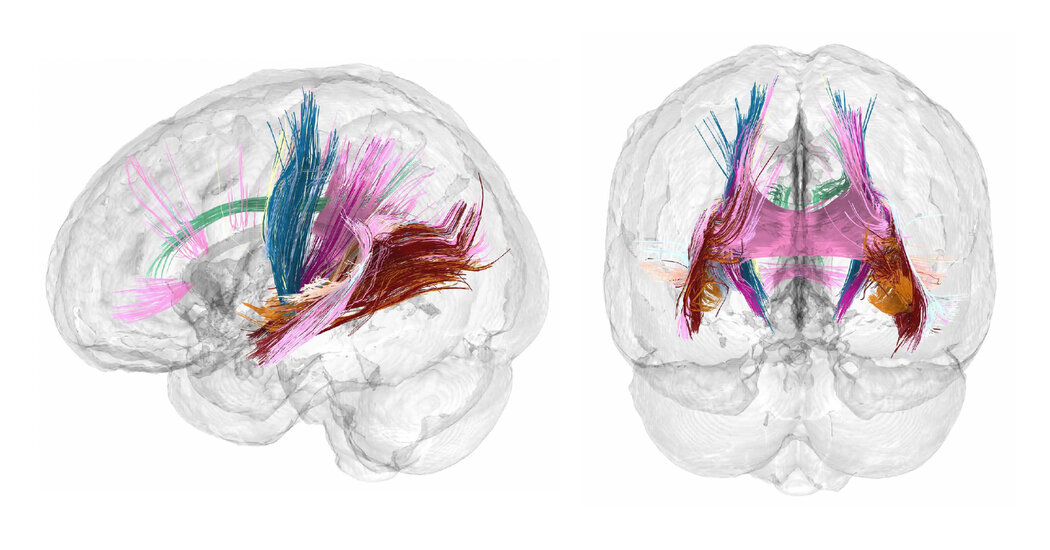As hormones surge, some brain areas shrink in what scientists say may be a fine-tuning that helps mothers bond with and care for their babies.
Research is revealing intriguing clues about how pregnancy changes the brain.
Studies scanning women’s brains before and after pregnancy have found that certain brain networks, especially those involved in social and emotional processing, shrink during pregnancy, possibly undergoing a fine-tuning process in preparation for parenting. Such changes correspond with surges in pregnancy hormones, especially estrogen, and some last at least two years after childbirth, researchers have found.
A new study, published Monday in the journal Nature Neuroscience, adds to the picture by documenting with M.R.I.s brain changes throughout one woman’s pregnancy. It confirms previous results and adds detail, including that white matter fibers showed greater ability to efficiently transmit signals between brain cells, a change that evaporated once the baby was born.
“What’s very interesting about this current study is that it provides such a detailed mapping,” said Elseline Hoekzema, a neuroscientist who heads the Pregnancy and the Brain Lab at Amsterdam University Medical Center and has helped lead studies analyzing brain scans of more than 100 women before and after pregnancy.
Dr. Hoekzema, who was not involved in the new study, said it showed that along with previously documented “longer-lasting changes in brain structure and function, more subtle, transient changes also occur.”
Dr. Ronald Dahl, director of the Institute of Human Development at the University of California, Berkeley, who was not involved in the new study, said the emerging research reflected the key role of hormones in transitions like puberty and pregnancy, guiding neurological shifts in priorities and motivations.
“There is that sense that it’s affecting so many of these systems,” he said.
The study participant, Elizabeth Chrastil, is a neuroscientist at the University of California, Irvine. She became pregnant in 2019, at 38, after in vitro fertilization. That allowed precise tracking of her pregnancy from the start.
